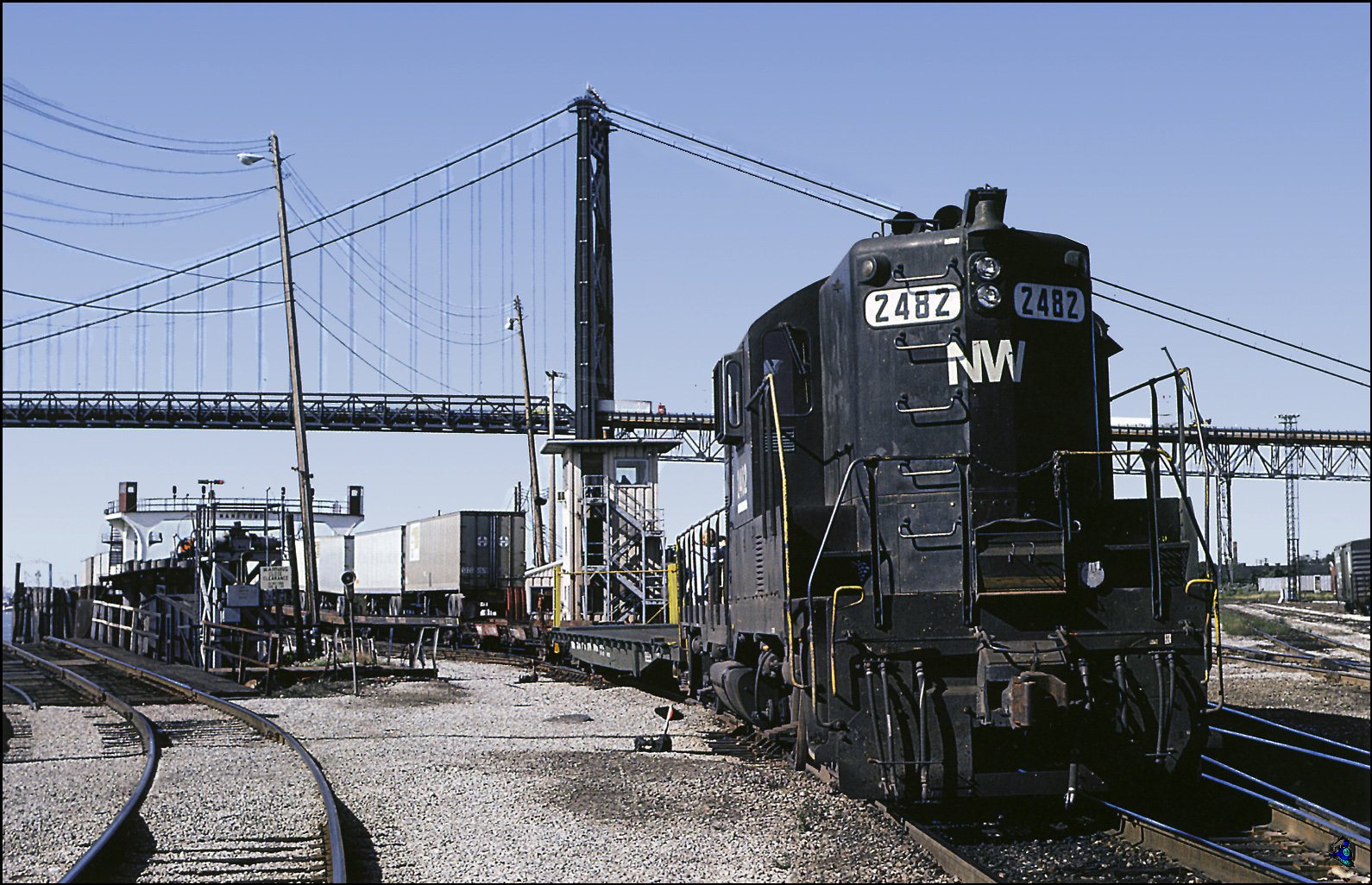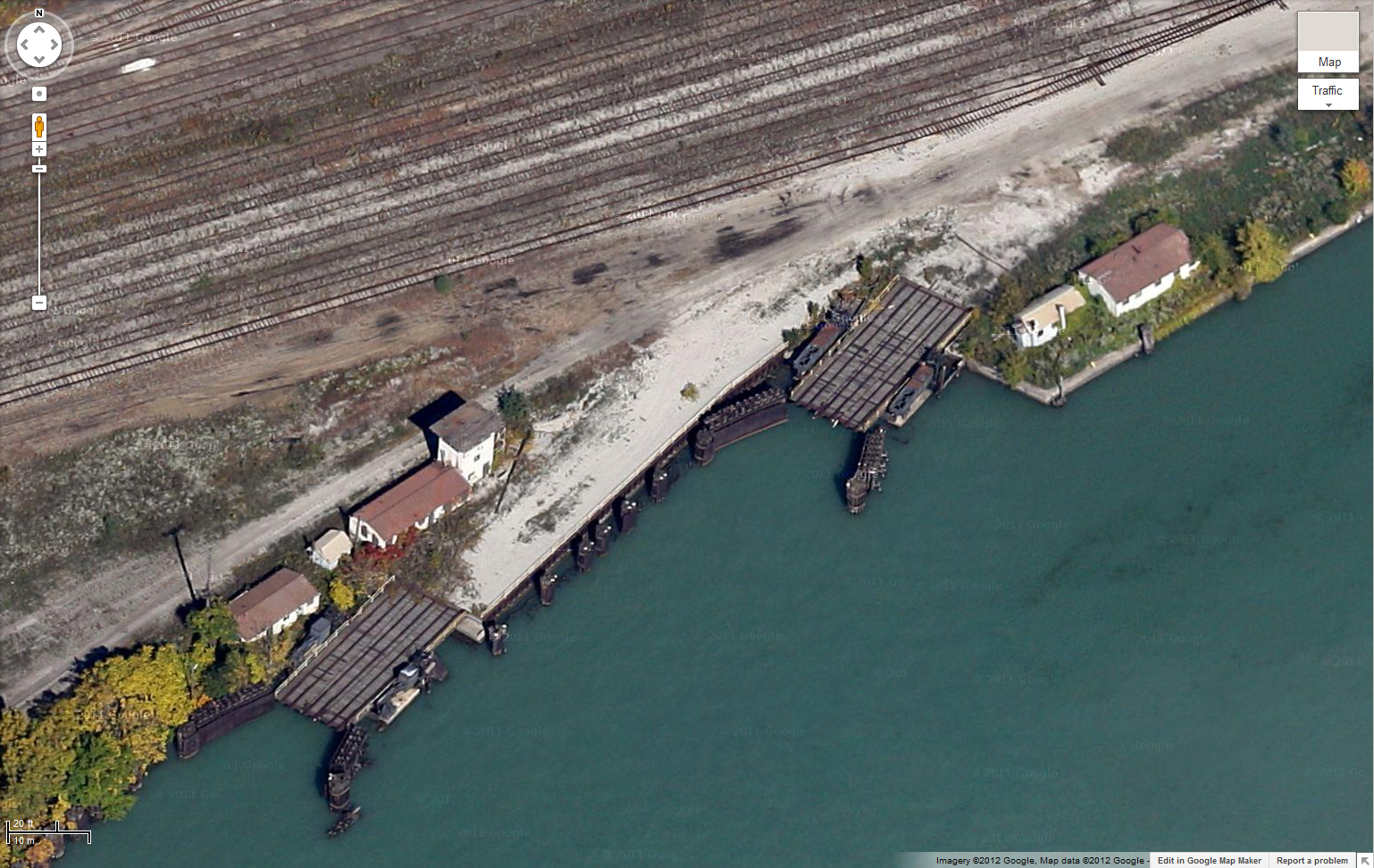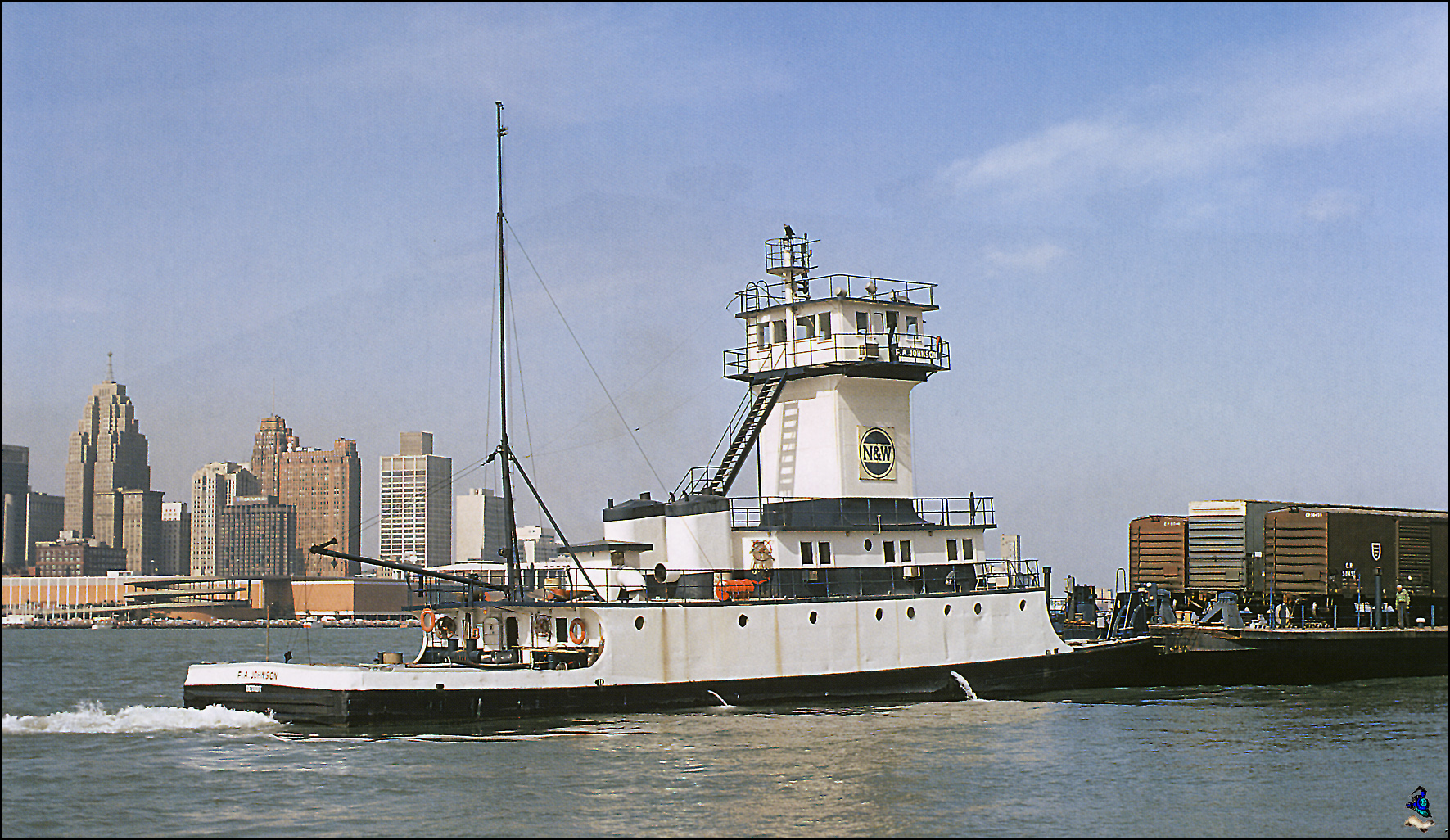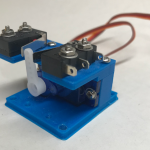
In 2011/12 I built my first Free-mo modules and joined the SE Michigan Free-mo group at the 2012 National Train Show (NTS) in Grand Rapids Michigan. We had modules from Minnesota, Wisconsin, Michigan, and Massachusetts. With the large number of Free-mo modelers who came together to at NTS, we were able to field a very large layout. Very high quality modules were brought by all the participants.

The conversation has just started for the 2014 NTS and many are already planning to join again in Cleveland Ohio. Although I have two modules presently, I am looking at the possibility of building another just for the 2014 NTS. The prior modules were very simple and were just to get my feet wet in Free-mo. My next modules will need to bring more to the table. These ideas are for something that will have more interest and provide operations and traffic to the layout. One idea is for a Rail-Marine Operation.
As a youth I remember watching the Norfolk and Western running a ferry (carfloat) service across the Detroit River to Windsor Ontario. These ferries were in use for excess dimension loads and hazardous materials that could not pass through the tunnels at Port Huron/Sarnia and Detroit/Windsor. A new tunnel was built under the St. Clair River by CN, while the CP tunnel at Windsor was enlarged, thereby eliminating the need for the ferries. The CSX ferry was a holdover from Pere Marquette days, and the NS operation was inherited from the Wabash. CN and Grand Trunk also had a ferry at Port Huron/Sarnia. At Detroit the NS served both CP and CN at different slips in Windsor. All this is now gone, but you can view a video sample of the operations at Detroit/Windsor and Port Huron/Sarnia.
Introducing a ferry interface into free-mo would add an interchange and some interesting switching operations. Operations for a can be more challenging than you might think. The float/ferry must be loaded and unloaded in a manner that does not cause the barge/ferry to list too much to one side or it could roll over. In watching the video, you will see that the barge is loaded from the center to the outside and unloaded in the reverse manner. Car weight is a factor as well, they must also be placed in a manner that spreads the load and balances the craft.

No commercial models of the NW (or CSX) ferries and aprons exist to my knowledge. Walthers in the past has made a carfloat and apron that are based on east coast operations with three tracks. The Detroit River crossings used three track aprons and older Ferries converted to barges. For ease of construction and space saving, I would use the Walthers versions.

Using the three track carfloat, we will need at least a three track yard and a long lead track. The barge is 39 inches in length and we will assume the longest string of cars will be about 36 inches long. The lead track and each of the yard tracks will need to be at least this long plus the length of the engine and one idler flat car. Total track length is therefore estimated to be 50 inches.

With the above dimensions above and assuming all module sections will be no more than 48 inches long, we will need at least three sections for a total length of 12 feet minimum.

Although the rail-marine operation has a lot of potential, it will be large and require a lot of track to complete. This is just one of a few possible modules I may construct. More to come soon.


I think that a FREMO module is ideal for representing a true rail-marine operation.
Here on PEI our rail connection, when we had a railroad, was by ferry and it’s fascinating to research the subject. Model railroaders tend to think of operations on a barge or ferry in terms of balancing the load but looking at CN here on PEI, there are some other fascinating opportunities for the modeller.
Up unitl the very end of rail service on PEI, one of the major traffic sources for the railroad here on the Island was propane. Local dealers found that the railroad was by far the most viable option to move this product. Because tank cars filled with propane require special handling, they could not be carried on a regular crossing. Often these cars would be handled on the last run of the day, late at night. Since CN charged an extra fee to handle these cars, instead of bringing them over one car at a time often a shipper would order a pile of cars. The entire block would be delivered to the yard or storage tracks closest to the business and be cycled through the actual propane dealer as needed over the course of the month or however long it took to unload the block.
Because the Northumberland Strait was tidal, rail cars could only be loaded at certain times. Additionally, crews had to be careful about the engines used to make sure there was enough clearance at the pilot so it didn’t ground out. Navigating this approach ramp and some of the short steep grades, etc. So loading or unloading the boat was often more complicated than simply balancing the car’s weight.
Looking at some Employee Timetables from CN I also note that sidings closest to the centre of the boat didn’t offer as much clearance and crews would need to be careful that any equipment planned for these centre tracks would foul against the boat’s superstructure.
I think from a FREMO layout design persepective, the modules featuring the ferry would really showcase the FREMO design opportunities. You could simply terminate one leg of the layout with the yard, apron and boat modules. Not only would it make logical sense but also what a fantastic place to showcase these fascinating modules eh?!
Thanks for the comments and insight to another marine operation. I am working on a track plan for the module but could not get it done in time to include in this post. I am still having trouble with fitting everything in while maintaining a prototypical operation plan. I could make the modules as large as needed and free-mo would allow for that, but I want to make the design compact, fit with the look of other modules and inspire others to try and build something. Size and transportation of the modules is also an issue. Concessions will have to be made, but they have not jelled out yet.
Three of us here on PEI are trying to create modules to actually model the ferry operation in PEI at Borden. Borden’s yard and ferry slip were quite a long, thin yard and they could easily eat up a large area. I’m really curious about ways to distill the essence of that operation down into a much smaller area. I think it can be done by forgetting about the layout altogether and focussing intently on the operations we want to replicate. If we started with some ideas of what types of trains were arriving and noted that and how much room they would need to store and also to either pull from the boat or prep. to load onto the boat. With this in mind, We should be able to look at the actual yard plans and strip away the trackwork that is now “out of scope” leaving us with what we need to support our operations. I think then it’s easier to compress this down into the area that’s needed.
I’m looking forward to seeing how your’s comes along.
Looking at the schematic you have, one thing you may want to do is simply consolidate the yard leads into one. Working on the assumption that you only have one engine working the yard & float, it only needs one lead. Also, by limiting the number of cars you can on/off load at one time, you may be able to shorten the required lead. After all, they would very rarely push a complete string onto one of the tracks, except possibly the center. If you don’t have a center, then you have to alternate, one car, then two cars, then two, and finally one (the 2 car sequence repeats as needed). Since you don’t shove the cars all the way to the back at once, you don’t need to reach the full length of the float.
Looking at it now, I agree. At the time I was thinking I needed the lead so as not to foul incoming trains. But I defeated that when I made the yard cross the incoming line. I was thinking of the lead needed to be long to support the use of an idler car. It is interesting looking at the images, NW used an idler while the CN did not. I have to assume the CN switcher was light enough to not warrant the idler car. This is still a work in progress and I am still working on a final track plan. Thanks for the input.
I found out about this page from your Detroit Terminal page. I have had model railroads that include Great Lakes Carferries in them over the past 20 years. The first one was the Ann Arbor Railroad carferry route from Elberta to Manistique that I used to connect an AA layout at one level and a Manistique & Lake Superior layout on another. I then switched this over to a Green Bay & Western routing at Kewanee wtih GBW on one level. I used a home-built model of a carferry that I bought from a friend and one I made myself modeled on that one. It worked great. Now I have a Detroit Grand Trunk Western layout with the carferries connecting it with Canadian National in Windsor, Ontario. It makes for a great aspect of a model railroad and all my operators want to switch the carferries.
I wrote two books that cover, in part, the Detroit River Carferries. They are Volumes 2 and 7 of Chronicles of a Detroit Railfan that you mentioned in the Detroit Terminal page. I also wrote a book about my model railroads called Model Train Madness that describes these above-mentioned layouts. Lastly, my book Train Madness has a story in it about riding on the Ann Arbor carferry. Here is the link to them on Amazon.
http://www.amazon.com/s/ref=nb_sb_noss_1?url=search-alias%3Dstripbooks&field-keywords=Byron%20Babbish
Byron Babbish
I also remember watching the tugs, car floats and switchers work when I was between 7-14. Always from the Canadian side and the CN yard. I still have photos I took back then. Pat
I was watching about 1981-83 from Canada side as well. You really could never see much from the USA side. I would like to see the photos if possible!!
I would post them, but I don’t see a way to do that here.